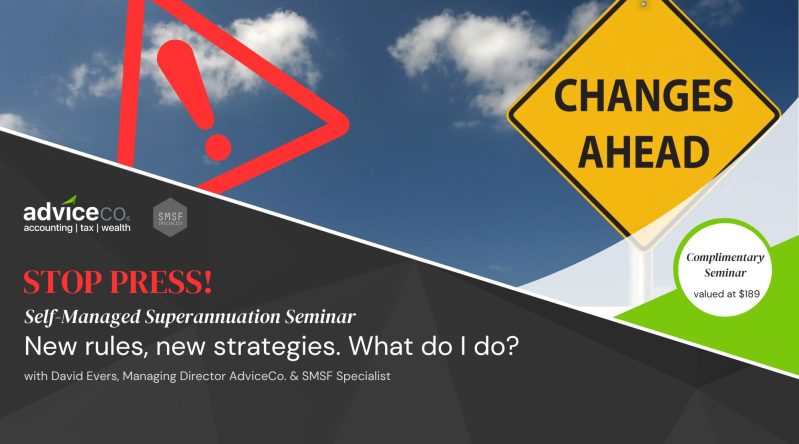Trust Essentials Posted on February 6, 2018

Why use a trust?
Trusts are commonly used to protect assets, as property and other assets that are held by a trust have a level of protection from creditors.
A trust can also maintain an estate until a beneficiary becomes old enough to have legal possession, or isolate valuable assets from a trading company that may be more exposed to litigation, for example. In some cases, trusts can be used to legitimately reduce tax if appropriately structured.
Another spur for trust use may occur if means testing or asset testing for government benefits are likely to figure in your financial future. Trusts can help here with the re-allocation of legal ownership without completely enjoying the benefits of the asset.
The other side of asset protection is a consideration for inheritance. If a prime asset is “owned” by a trust, lie for instance a house with pristine beach front, and the trust deed is specific in terms of selling and/or maintaining the beach house, future generations of the family will be able to enjoy the same asset and not have it sold off by some future spendthrift relative.
How do trusts work?
The word used to name these types of arrangements – “trust” – is appropriate. A trust is a legal structure that separates control and legal ownership from beneficial ownership; so that at least one person and/or company agrees to hold and manage assets or property in a way that will benefit someone else (one or more “beneficiaries”).
A trust therefore is a formal structure for an obligation, where beneficiaries place their trust (in the sense of “confidence”) in the controller or holder of assets (called the “trustee”) to manage those assets for their eventual benefit.
There are pitfalls however, as well as challenges in getting the trust structure right. Asset safety and taxation can sometimes be competing interests, and other trade-offs made to take advantage of a trust structure need to be considered.
For instance, when selling your primary residence, one of the main requirements for this sale to be tax free is that it is held in your own personal name. This means trusts cannot generally sell a primary residence tax free.
Legal advice is typically required. Speak to us if you think that a trust is appropriate for you and we can point you in the right direction.
Elements of a trust
Good advice and guidance is of course a primary essential. However the other essential elements required for a valid trust are:
- the trust deed
- the trustee
- certain beneficiaries
- the trust assets, which is clearly identifiable and capable of being “held on trust”, and
- the obligation in respect of the trust assets referred to above (as spelled out in the deed)
Trust deed: The central document
The trust deed establishes the trust and sets out the rules for governance and operation of the trust, and the powers of the trustee. This will need to be drafted by a lawyer.
The key clauses of the trust deed are those dealing with:
- The beneficiaries of the trust; most deeds provide for:
- primary beneficiaries – named in the trust deed
- general beneficiaries – typically defined in terms of a class or by their relationship to the primary beneficiaries, and
- default beneficiaries – who are entitled to the trust’s income if the trustee does not make a valid distribution to the primary or general beneficiaries.
- The income of the trust: The trust deed may define the income of the trust in various ways – for example, for some deeds this might include a clause that equates trust income to “taxable income” ( as defined under tax law). In deeds where income is not defined, the income of the trust would ordinarily be according to general or trusts concepts. Also, the trustee may have discretion under the trust deed to determine whether a receipt of the trust is income or capital
- The requirements for the trustee to make a distribution of income: The trust deed will usually specify that the trustee must resolve or take action to distribute the trust’s income by a particular point in time (for example, 30 June)
- The “streaming” of income: If the trustee wishes to distribute income in accordance with the rules, the trust deed must contain provisions that allow a beneficiary to be made specifically entitled to an amount of trust income in its character as a capital gain or a franked distribution
- The vesting date of the trust: This is the date that the trust comes to an end and the capital must be returned to the primary beneficiaries. By law, there is typically a statutory vesting date of 80 years.
It is important to note that if the trustee has resolved to either pay or apply an amount of trust income to or for the benefit of a beneficiary, that beneficiary will be deemed to be “presently entitled” to the amount. This may lead to a taxation liability for that beneficiary, even though no money has been handed over.
Types of trusts
There are various forms of trusts that may be formed. Three broad categories include:
- In a fixed trust, the share that beneficiaries have in assets and income (which may be proportional or absolute) are pre-determined and “fixed”, leaving no leeway for the trustee to vary income distribution. Unit trusts are typically fixed trusts as each unit held in the trust represents an entitlement to a certain proportion of the income and capital.
- A discretionary trust provides the trustee with a “discretion”, as the name implies, over who receives income or capital distributions from the trust. The discretion must be exercised in accordance with the terms of the trust deed.
- A hybrid trust has characteristics of both fixed and discretionary trusts, and can be a unit trust with discretionary distribution options, or a discretionary trust but with certain entitlements that are fixed by the trust deed (for example, a percentage always has to go to a charity). A hybrid trust can be anything that is neither totally discretionary nor totally fixed.
Family trusts
A discretionary or hybrid trust can generally be a “family trust” for tax purposes if the trustee so elects, but distributions need to be restricted to members of a particular “family group” – distributions outside this group will attract tax at the highest marginal rate (including Medicare levy).
Then why elect to form a family trust? There are a number of reasons and two key ones are that beneficiaries of discretionary trusts may not otherwise be able to take advantage of franking credits attached to share dividends received by the trust and passed on to the beneficiaries, and that the trust would otherwise find it a lot harder to use past year tax losses against current year income.





